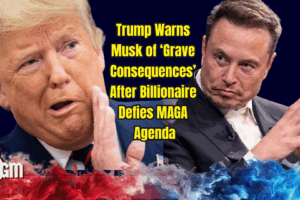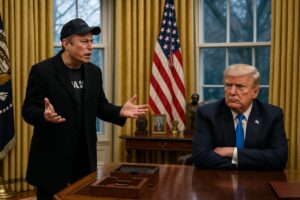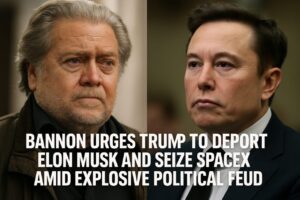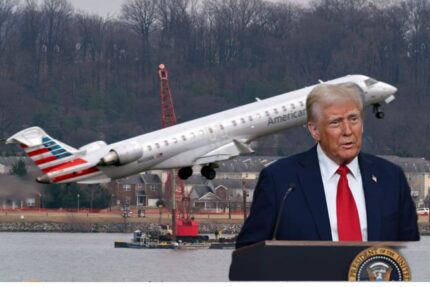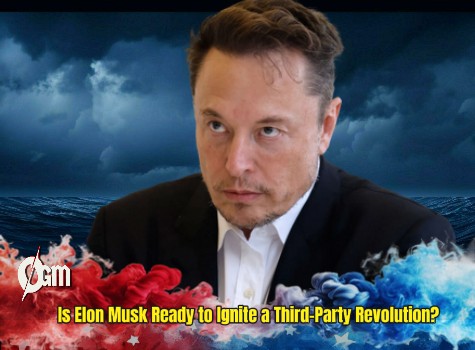The Trump administration has begun terminating hundreds of Federal Aviation Administration (FAA) employees, sparking concerns about aviation safety just weeks after a midair collision over Washington, D.C., claimed 67 lives. The layoffs, which primarily targeted probationary workers, have drawn sharp criticism from aviation unions and industry experts, who warn of potential risks to an already strained air traffic system.
Mass Firings Amid Aviation Safety Concerns
The Professional Aviation Safety Specialists (PASS) union revealed that hundreds of FAA employees received termination notices late Friday night via email. These layoffs reportedly affected workers responsible for radar maintenance, landing systems, and navigational aid support—critical functions for aviation safety.
Transportation Secretary Sean Duffy, in a statement on X (formerly Twitter), clarified that fewer than 400 employees were dismissed and insisted that “zero air traffic controllers and critical safety personnel were let go.” However, industry experts and union leaders argue that these firings will still have a significant impact on flight safety, as they included maintenance specialists essential for ensuring the reliability of radar and navigational systems.
The National Air Traffic Controllers Association (NATCA) announced it was analyzing the impact of these terminations on national airspace operations. Many fear that with the FAA already facing a shortage of 3,500 air traffic controllers, further reductions in support personnel could exacerbate delays, increase risks, and undermine public confidence in air travel.
Elon Musk’s Role in Air Traffic System Overhaul
Amid the controversy surrounding the layoffs, the Department of Government Efficiency (DOGE), led by billionaire Elon Musk, has been actively working with the FAA to modernize the air traffic control system. Musk’s team recently visited the FAA’s Air Traffic Control Command Center in Virginia to assess current operations and propose technological upgrades.
While some officials see Musk’s involvement as an opportunity to improve efficiency, others worry about potential conflicts of interest. Musk’s businesses, including SpaceX and Tesla, have previously clashed with the FAA over regulatory decisions. Critics argue that his role in shaping federal aviation policies could lead to regulatory favoritism and compromise safety oversight.
Transportation Secretary Duffy defended the collaboration, stating that Musk’s team was offering “innovative solutions to bring the FAA into the 21st century.” However, union leaders and industry experts remain skeptical, questioning whether technology-driven cost-cutting measures will prioritize corporate interests over passenger safety.
National Security Concerns Over FAA Layoffs
Beyond aviation safety, the firings have raised alarms about potential national security risks. Some of the terminated employees were reportedly working on an early warning radar system in Hawaii designed to detect incoming cruise missiles. The program, partially funded by the Department of Defense, was managed under the FAA’s National Airspace System Defense Program.
Charles Spitzer-Stadtlander, a terminated employee from this branch, expressed grave concerns, stating, “This is about protecting national security, and I’m scared to death. The American public should be scared too.” He warned that dismissing key personnel without ensuring proper knowledge transfer could weaken the country’s ability to detect airborne threats.
Several national security analysts have echoed these concerns, questioning whether the administration fully understood the implications of cutting staff from defense-related aviation programs. The White House has not issued a statement addressing these specific allegations.
FAA Staffing Crisis and Growing Public Backlash
The FAA has been struggling with workforce shortages for years, with staffing levels down 10% since 2012. Federal officials have repeatedly warned that an overworked and understaffed air traffic control system increases the risk of accidents and near-misses. The fatal January collision in Washington, D.C., is still under investigation, but early reports suggest that staffing shortages may have played a role.
Unions and aviation experts argue that the Trump administration’s decision to terminate FAA personnel without considering the broader staffing crisis is reckless. “These firings will increase the workload and place new responsibilities on a workforce that is already stretched thin,” said PASS president David Spero.
Public concern over aviation safety has also intensified following these firings. Passengers and industry stakeholders are demanding clarity on how the FAA plans to maintain safety standards amid significant workforce reductions. Some lawmakers have called for congressional hearings to scrutinize the decision and explore potential legislative measures to prevent similar cuts in the future.
Political and Legal Ramifications
The mass terminations come at a time when the Trump administration is pushing for a broad overhaul of the federal workforce. Under Musk’s Department of Government Efficiency, agencies have been instructed to reduce staff, streamline operations, and cut costs. However, legal experts warn that terminating employees “without cause” could lead to lawsuits and labor disputes.
Several dismissed FAA workers have reported that their termination emails came from a non-government Microsoft email address, raising questions about the transparency and legality of the process. Some employees believe they were specifically targeted for their views on Musk’s companies, adding another layer of controversy to the firings.
With mounting backlash, the Biden campaign and congressional Democrats have seized on the issue, accusing the Trump administration of prioritizing cost-cutting over public safety. Meanwhile, the FAA’s future remains uncertain as the agency navigates a critical period of staffing shortages, technological modernization, and national security challenges.
As investigations continue into both the layoffs and the recent D.C. plane crash, all eyes will be on the administration’s next moves and whether corrective action will be taken to restore public confidence in America’s aviation system.




